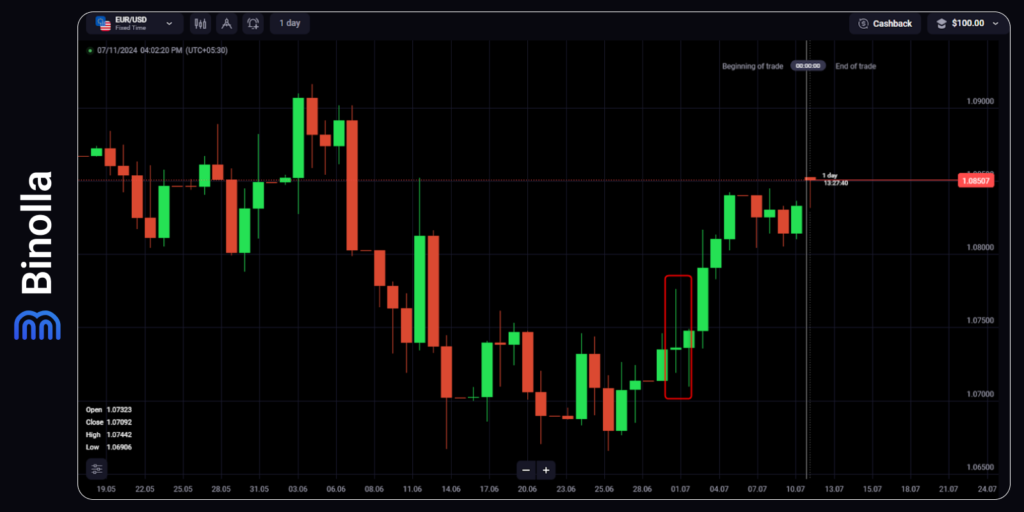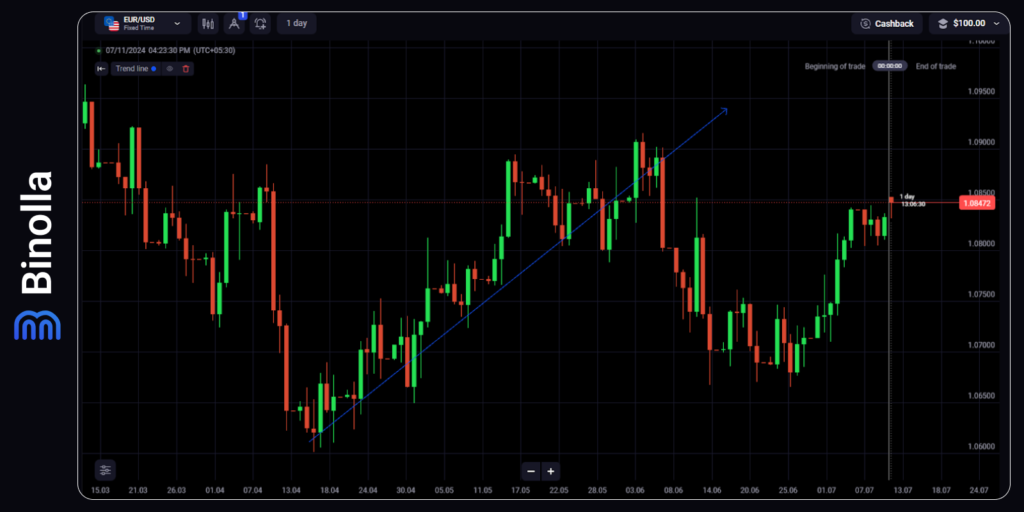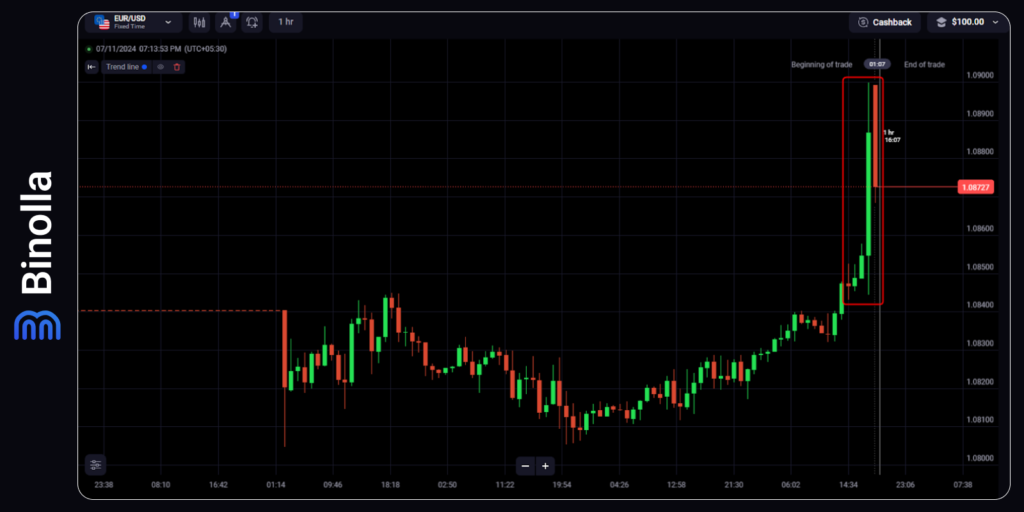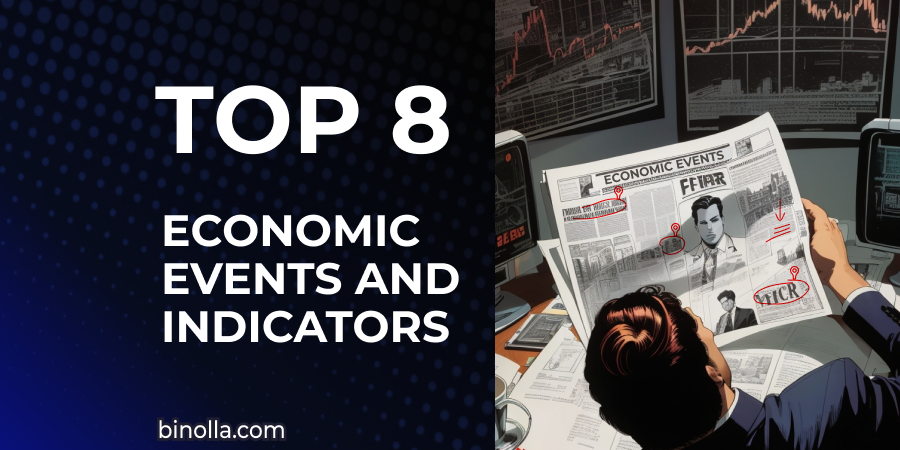Pairing Technical and Fundamental Analysis in Digital Options Strategies

Making research is crucial for traders to predict price fluctuations and make data-driven decisions regardless of the type of assets they trade. Fundamental and technical analysis can be applied to Forex trading, stocks, cryptocurrencies, etc. Digital options traders can also pair them in order to improve their results. This article aims to demonstrate how fundamental and technical analysis can be combined by market participants in order to have a better insight into financial markets and increase their trading performance. Those who want to start testing strategies can register at Binolla and use the methods described in this article.
Contents
- 1 Technical and Fundamental Analysis Explained
- 2 How to Pair Both Analysis Types in Trading
- 3 Try pairing both analysis types with Binolla!
- 4 Benefits of Using Both Technical and Fundamental Analysis in Trading
- 5 Pairing Technical Analysis and News Trading
- 6 Difference Between Pairing Technical Analysis with Fundamental Analysis and News Trading
- 7 Tips and Recommendations for Pairing Technical and Fundamental Analysis
- 8 FAQ
Technical and Fundamental Analysis Explained
Before delving deeper into pairing both analysis types for digital options trading, it is worth having a closer look at both research methods separately. This will help you better understand the difference between them.
Technical Analysis Basics
The main goal of the technical analysis is to make price predictions based on charts and technical indicators. You don’t need to look through the economic calendar when utilising this method. The only thing you need is to watch price fluctuations. By learning various patterns and indicators, one can use this information to be able to forecast where the price is going to move in the future.
When it comes to digital options, traders can apply various strategies based on the technical analysis method. In particular, they can buy contracts based on indicators, Japanese candlestick patterns, graphic models, etc.
Even though this analysis method is autonomous, which means that you can solely rely on technical research when choosing the direction of the trade, it is better to combine it with the fundamental analysis. This way, you will be able have a more strategic view of what is happening in the financial markets and step outside the chart situation only. Moreover, a trader will be able to understand reasons behind most price mid-term and long-term movements.
Fundamental Analysis Basics
Unlike the previous one, fundamental analysis is based on the concept that price fluctuations heavily depend on how market participants react to various data releases and events. For instance, the recent French Parliamentary elections had a serious impact on EUR. The currency closed with no clear direction on Monday, July 1.

While some traders and investors feared the possibility of the French National Rally getting the majority in Parliament, others were optimistic about the second round, which took place a week later and prevented the far-right party from receiving the majority of seats. Therefore, EUR/USD moved upwards later supported by the expectations of the next major event in the world of Forex – the first interest cut by the Fed, which is likely to take place in September 2024.
As you can see from this particular example, fundamental analysis has a significant impact on price fluctuations. However, the idea is not only to “read” fundamentals but to be able to predict how a data release or an event will influence price fluctuations. You can read more about fundamental analysis in our blog.
How to Pair Both Analysis Types in Trading
While technical and fundamental analysis types are totally different, a trader can still pair them to improve their results. Here are some recommendations on how you can do it in your trading routine.
Use Technical Analysis to Define Major Trends
First, you need to have a glance at higher timeframes to be able to pinpoint major trends. There are plenty of tools allowing you to outline one, including trendlines, trend-following indicators, and many more.

The example above demonstrates how a trader can use a trendline to outline a trend in the Daily timeframe. In this particular case, a market participant can easily reveal an uptrend, which started in April 2024 and developed until June 2024. Once the trendline was finally broken, a brief downtrend took place. Once the major trend is outlined, one can switch to an economic calendar to learn more about the upcoming fundamentals.
Checking Current and Upcoming Fundamentals
The next step is to go through the economic calendar to reveal all the fundamentals that may have an impact on price fluctuations. First, a trader should look at central banks’ meetings, inflation and labor market data and other important data releases that are in central bankers’ focus. At this point, you should also see whether fundamental analysis goes in confluence with the current market trend.
To do it, you can simply check what are the expectations about the monetary policy. For instance, if the Fed is likely to cut rates in the near future, while the ECB is likely to stick to the contractionary policy for a bit longer, then a trader will see the uptrend. Conversely, if the Fed is likely to stick to contractionary policy while the ECB is going to cut rates in the upcoming months, then the situation will be in favor of the US dollar. Then, when looking at the EUR/USD chart, you will see the price setting lower lows.
Finding Entry Points
Once the trend is confirmed by both technical and fundamental analysis, a trader switches to the technical method again to find entry points. They can still use the daily chart when trading Forex and wishing to hold their positions for longer. However, if they are looking for short-term profits, they can switch to lower timeframes and look for entry points there.
To be able to buy a currency pair, stock, cryptocurrency or even a digital option contract, traders can use various strategies, including those based on indicators or Japanese candlestick patterns.

Our next example illustrates how a trader can buy a currency pair or purchase a digital option when using a confluence of technical and fundamental signals. First, you can see a blue line below the chart, which is a trendline from the Daily chart that we have already drawn previously. Therefore, it is better to buy Higher contracts or purchase assets while this trendline is valid.
In this particular situation, the price is nearing the blue trendline but a reversal candlestick appears a bit higher. Nevertheless, a trader can buy a Higher contract or buy a currency pair on the Hourly chart.
Setting Stop Losses and Pinpointing Take Profits
For FX traders, setting stops and finding take-profit levels is crucial. To do that, one can also rely on both technical and fundamental analysis. Imagine, that we still have an uptrend and the price is moving higher. When there is an entry point, you can place a stop loss right below the signal candlestick or one that is close to the signal candlestick with a taller tail.
How can fundamental analysis be useful in this case? Imagine that the EUR/USD price is moving higher on the Daily chart and you have bought it at some point placing a stop loss somewhere below the line. However, the Fed decided to postpone the Federal funds rate cut, which supported the US dollar. In this particular case, you can expect the EUR/USD price to move lower. Even if you haven’t placed a stop-loss order, you can close the position manually as it is unlikely that the currency pair will resume its growth in the near term.
For long-term Forex CFD traders, this may be a great opportunity to add to their current positions without closing trades. If you are sure about the next Fed steps, then you don’t necessarily need to review your current long-term positions.
Benefits of Using Both Technical and Fundamental Analysis in Trading
When pairing technical and fundamental analysis, you will see how many advantages you may have over those focusing only on one of them. Some of the key advantages include:
- A comprehensive market picture. By pairing both analysis types, traders can have a valuable insight into the global market picture and better understand the reasons of each particular price movement. By implementing this approach, traders can make more informed decisions as well as be more accurate when predicting price fluctuations.
- Improved risk management. By relying solely on technical analysis, digital options and Forex traders will see levels only. However, when adding fundamental analysis, a trader can understand when a trend may reverse or whether it has the potential to move to another support or resistance. Thus, you will be able to better react to price changes and manage your risks.
- More confidence. Confluence in trading plays an important role. Having one signal is good but being confident about what you are doing is even better. By combining technical and fundamental analysis, traders can be more confident about their next steps in trading both digital options and Forex CFDs.
- Possibility to use a variety of trading styles. With the combination of technical and fundamental analysis, you can use various strategies, including range-bound systems, swing methods and even long-term approaches.
The Disadvantages of Pairing Fundamental and Technical Analysis
Every coin has both sides and pairing technical and fundamental analysis is not exclusion. Along with advantages, some disadvantages can also be found:
- Complexity. To combine both analysis methods, you should be aware of technical and fundamental analysis. While the technical one may seem simple and straightforward, when it comes to fundamental analysis, you will have to learn a lot of things, including the dependencies between various data releases and events and currencies/stocks/cryptocurrencies, etc. Therefore, you will spend some time diving into this type of analysis before being able to apply it to your strategies.
- Opposite signals. Signals coming from technical and fundamental analysis may conflict from time to time. At these times, you will have to make decisions based on one of the methods or simply avoid trading.
- A lot of information. One of the disadvantages of pairing technical and fundamental analysis for FX or digital options trading is that you will receive a lot of information that you need to process. Vast amounts of data coming from both technical and fundamental indicators may be overwhelming.
Pairing Technical Analysis and News Trading
If you don’t want to understand the intricacies of the fundamental analysis and follow the next central banks’ decisions and commentaries, then you can still augment your trading with particular news releases. All the key fundamental indicators, including inflation, labor market and even cash rate decisions may be crucial for price fluctuations.
Instead of making any long-term or mid-term conclusions, you can simply pair your technical analysis strategies with single fundamentals and capitalize on this bundle.
An Example of Pairing Technical Analysis with News Trading
To apply any of such strategies, you need to have an economic calendar at hand first. Most traders look through it at the beginning of the week to know the exact date and time of the next important data release. You can either keep it in your memory or use alerts.

When the time comes, you need to watch the results and act according to your previous technical analysis strategy. The image above shows that EUR/USD was in the uptrend for a while until the US CPI data was released on July 11, 2024. Right after the release, the price surged significantly, allowing both digital options and Forex CFD traders to capitalize on such a price movement.
The idea behind this strategy is to buy a Higher contract or buy a currency pair/stock/cryptocurrency once the results of the macroeconomic indicator are released.
Difference Between Pairing Technical Analysis with Fundamental Analysis and News Trading
The major difference between the two approaches is that when you combine technical and fundamental analysis, you focus on major trends. While fundamental analysis rely on single fundamentals, the idea is to reveal some tendencies.
On the other hand, when pairing technical analysis with news trading, a trader uses a single data release for trading. In this case, they do not need to pinpoint major trends. Their primary goal is to understand the short-term market reaction and compare it to the current technical chart situation.
Tips and Recommendations for Pairing Technical and Fundamental Analysis
Before concluding this article, it is worth giving some recommendations. To make the most of pairing both analysis types, traders should consider the following tips:
- Use different timeframes. Higher timeframes can be used to find long-term trends that can be aligned with fundamental analysis. To find entry points, it is better to switch to lower timeframes. For instance, if you expect the central bank to cut rates at some moment within a year, you can see a major trend on Daily or even Weekly timeframe. To join the movement, you can go to Daily or even Hourly chart.
- Pinpoint the main fundamental triggers. Before placing your first trade, you should outline the events and data releases that may trigger significant price movements. This can be inflation data, central bank meetings, rate decisions, GDP data, and others.
- Use technical indicators to confirm entry points. Even if there is a clear fundamental trend, it is worth using technical indicators and other tools to be able to find precise entry points. For FX CFD traders, it is also worth pinpointing potential stop losses and take-profit levels.
- Follow the news. Macroeconomic landscape is constantly changing. One single data release may change the opinion of central bankers about the upcoming rate cut or hiking.
- Balance both analysis types. Try to balance both fundamental and technical analysis in your trading. When there are contradictionary signals, avoid trading.
- Be informed about market sentiment. Read news and reviews to be able to understand the market mood and sentiment. This will help you understand the main moneyflow direction.
- Adjust your trading. Even if you have bought a currency pair, a stock, or a cryptocurrency expecting it to grow, the conditiokns may change. You should review your trades and understand whether these changes are temporary or you deal with a clear market reversal.
- Do not trade without a trading plan. Apart from pinpointing market directions and fundamental trends, you should use risk and money management to protect your funds from excessive risks.
FAQ

What is the Difference Between Technical and Fundamental Analysis?
While fundamental analysis focuses on the impact of macroeconomic data and trends on the price movement direction, technical analysis relies on price fluctuations to predict future changes.
How Can Traders Benefit from Pairing Technical and Fundamental Analysis?
By combining both analysis types, traders can make data-driven decisions. Both analysis types can work together alllowing traders to see major trends and identify entry and exit points.
What Indicators Are Crucial for Fundamental Analysis?
Traders should focus on rate decisions, inflation, labor market data, GDP, PMIs, and other key fundamentals.
When Do Traders Should Rely More on Technical Analysis Versus Fundamental Analysis?
A trader can focus on technical analysis when they try to open short-term positions or simply don’t want to delve into fundamentals relying on price fluctuations and indicators.







